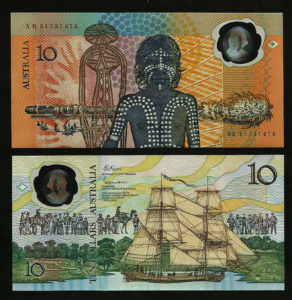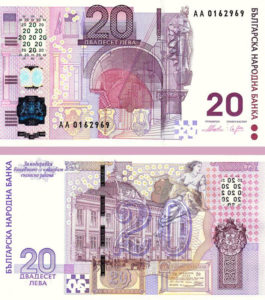Polymer Banknotes
Polymer Banknotes
Polymer Banknotes are made from a synthetic polymer such as biaxially oriented polypropylene.The new polymer notes allow for enhanced security features, such as the see-through window and holograms.With this enhanced security features , it is very hard to counterfeit the polymer banknotes. Because of the material used in the production of polymer banknotes , they are also more durable than paper banknotes, are cleaner and more hygienic, and can be recycled at the end of their useful life into a range of plastic products. Polymer banknotes have reduced cost for production.
Polymer banknotes usually have three levels of security devices. Primary security devices are easily recognisable by consumers and may include intaglio, metal strips, and the clear areas of the banknote. Secondary security devices are detectable by a machine. Tertiary security devices may only be detectable by the issuing authority when a banknote is returned.
Reserve Bank Of Australia developed the first modern polymer banknotes, and they were issued the first polymer notes in 1988. The polymer Australia $10 commemorative banknote in January 1988 is issued by Reserve Bank Of Australia to mark Australia’s bicentenary.Later on the new series of banknotes (1992 1996) all printed on polymer. They are introduced to replace the original decimal banknotes.

Later on many other countries started to replace their paper banknotes with polymer banknotes.Here is a list of countries which started to use polymer banknotes ,
Brunei, Canada, Maldives, Mauritania, Nicaragua, New Zealand, Papua New Guinea, Romania, Vanuatu and Vietnam UK, Nigeria, Cape Verde, Chile, The Gambia, Nicaragua, Trinidad and Tobago, Mexico, Singapore, Malaysia, Botswana, North Macedonia, the Russian Federation, Armenia, Solomon Islands, Egypt, the Organisation of Eastern Caribbean States (OECS), Samoa, Morocco, Albania, Hong Kong, Israel, Mozambique, Saudi Arabia, Guatemala, Haiti, Libya, Mauritius, Costa Rica, Honduras, Angola and Namibia.
A hybrid paper-polymer banknote is made from a mixture of paper and polymer substance which are are essentially a paper banknote with a polymer patch. A polymer patch/band is applied vertically over the entire height of paper banknote, thus creating a clear window. Bulgaria was the first country to produce a hybrid paper polymer banknote, in a denomination of 20 Bulgarian Leva in 2005.

Here are the countries which uses Hybrid Paper Polymer Banknote Armenia, Russia,Morocco, Qatar, Switzerland, Burundi Jamaica, Eswatini, Tonga, South Africa,Seychelles, Lesotho, Bermuda, Oman, Bulgaria,Fiji,Scotland, Kazakhstan,Iceland, Iraq, EU, Bhutan, Madagascar, Mauritania, Tajikistan, Zimbabwe, Bahamas, Latvia, Solomon Islands, Papua New Guinea and Cambodia and UAE.
